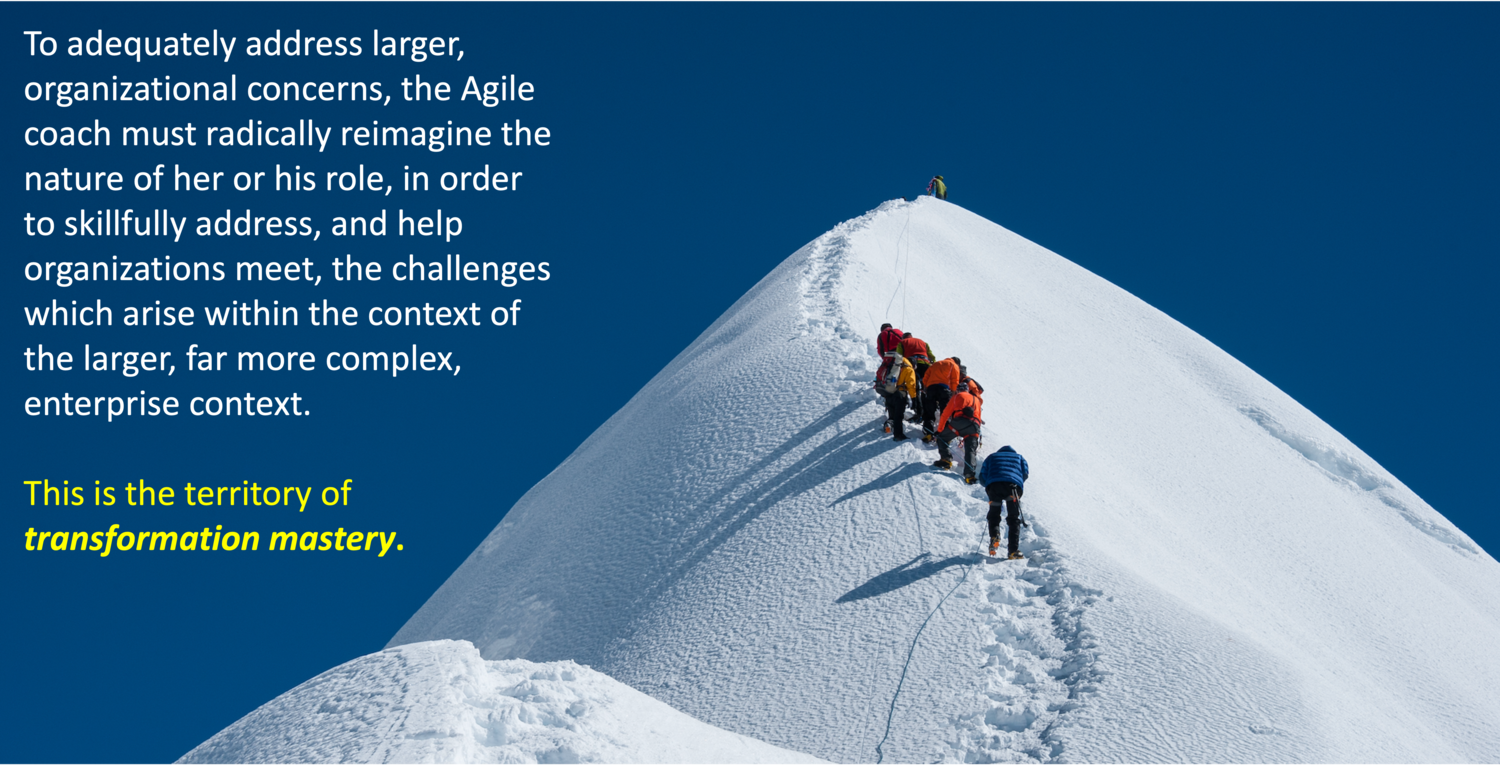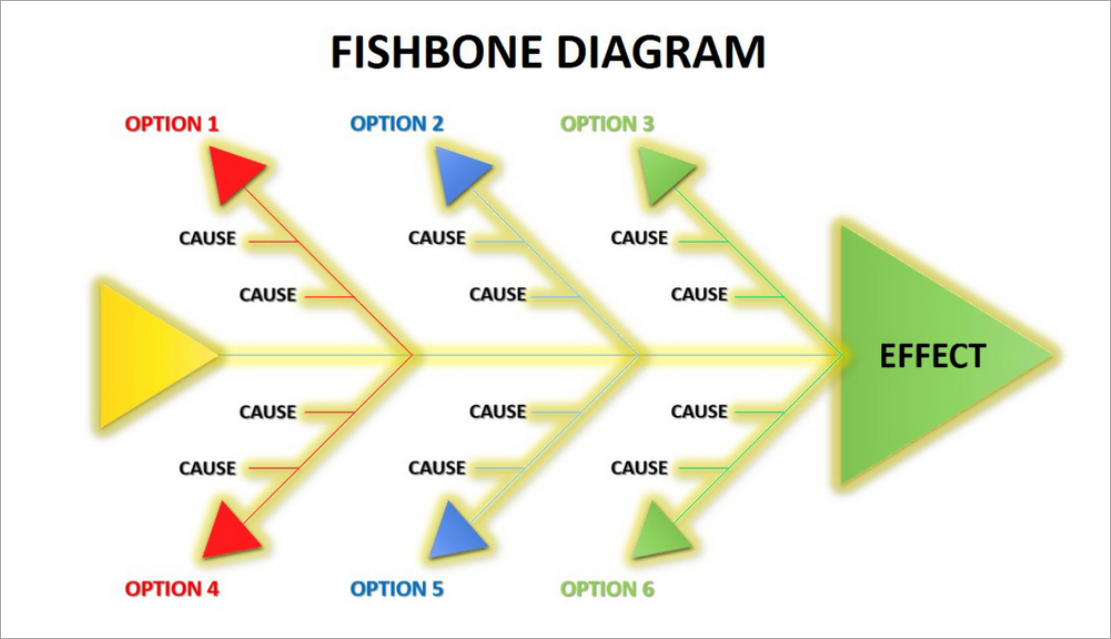Orchestrating Change: A Guide to Agile Transformation Mastery
By Team Lean Agile Intelligence

A Guide to Agile Transformation Mastery
A vital skill for Agile Coaches is their ability to orchestrate transformation and serve as catalysts for cultural change within an organization.
In this post, we will explore the strategies for coaches to achieve transformation mastery. We'll delve into each strategy, providing actionable insights that can be implemented right away. By following these foundational techniques, you can equip yourself with the skills and knowledge needed to implement successful team strategies. However, it's important to remember that Orchestrating Change is just one component of the bigger picture. To gain a comprehensive understanding of your current coaching process status, we recommend taking advantage of our free agile assessment for Agile Coach.
Orchestrating Change and The Learning Journey
At Lean Agile Intelligence, we recognize Orchestrating Change as the individual's ability to drive cultural transformation and guide the organization toward agility. We divided the learning journey into 4 different stages: Developing, Emerging, Adapting, and Optimizing. In the following sections, we will discuss each stage in detail as well as provide practical tips and techniques to help you extend your skills in this area.

Source - Transformation Mastery - Expert Cohort in Organizational Coaching
Developing
An Organization “developing” an understanding of the value of Orchestrating Change and adopting the foundational techniques should focus on the following improvements:
-
The What: Coaches others to create a sense of urgency around the need for transformation and to articulate the "why" to people
- The How: By clearly communicating the need for transformation, connecting it with organizational goals, using real-world examples and case studies, providing data and metrics, coaches can create a sense of urgency around the need for transformation. Let's look into how coaches can articulate the "why" for transformation to the team.
- Use Real-World Examples and Case Studies: By showcasing success stories and best practices from other organizations, coaches can provide tangible evidence of the positive impact of Agile transformation. This can help team members understand the relevance and applicability of Agile practices in their own context, and create a sense of urgency to adopt Agile ways of working.
-
Create a Transformation Roadmap: Agile teams can create a transformation roadmap that outlines the key milestones, activities, and initiatives that need to be undertaken as part of the Agile transformation. This roadmap should clearly connect each transformation initiative with the corresponding organizational goals it supports. This can help visualize the alignment between Agile transformation and organizational goals and provide a clear path for the team to follow throughout the transformation journey.
-
Communicate the Alignment: This can be done through regular updates, presentations, workshops, or other communication channels that are appropriate for the organization. Clearly highlight how Agile practices and principles are helping to achieve the organizational goals, and provide evidence and examples to reinforce the connection.
-
Measure and Monitor Progress: Agile teams should establish metrics and measures to track the progress of the Agile transformation effort and its impact on organizational goals. This can include quantitative metrics such as customer satisfaction scores, cycle time, delivery lead time, defect rates, or other relevant measures that demonstrate the progress toward achieving the organizational goals.
- The How: By clearly communicating the need for transformation, connecting it with organizational goals, using real-world examples and case studies, providing data and metrics, coaches can create a sense of urgency around the need for transformation. Let's look into how coaches can articulate the "why" for transformation to the team.
- The What: Facilitates the creation of a guiding coalition (i.e., steering committee) of influential leaders from different areas of the organization with a shared commitment to the transformation
-
The How: Create a Shared Vision but Establish Clear Roles and Responsibilities: Develop a compelling vision for the transformation that articulates the desired future state and benefits of the transformation efforts. Work with the guiding coalition to co-create and align on the vision. Ensure that the vision is communicated clearly and consistently to all stakeholders and that it resonates with their goals and aspirations. Once the team has a shared vision, clearly communicate the purpose, expectations, and responsibilities of the steering committee members, and ensure that they understand their roles in driving the transformation. Assign specific tasks and deliverables to each member based on their expertise and influence. Regularly review and align on the progress and outcomes of their responsibilities.
- The How: Provide Resources and Support to the team members in order to allow everyone to fulfill their responsibilities. This could include access to relevant data, budget, training, or external expertise. Provide them with the support they need to drive the transformation, and actively address any obstacles or barriers they may encounter in their roles. Regularly check in with them to understand their needs and provide assistance as needed.
-
The How: Monitor and Measure Progress by Establishing Key Performance Indicators (KPIs) and Metrics. Regularly review and track the progress against these KPIs, and communicate the results to the guiding coalition and other stakeholders. This provides visibility into the impact and effectiveness of the transformation efforts and helps to keep the guiding coalition engaged and motivated.
-

Emerging
An Organization “emerging” beyond the foundational techniques of Orchestrating Change and embracing it as they become more proficient should focus on the following improvements:
-
The What: Helps facilitate a clear vision for the transformation and ensures it is communicated to all impacted parties
- The How: There are many ways to facilitate developing a clear vision for the transformation, listed below are some that we recommend.
-
Elevator Pitch: Create a concise and compelling elevator pitch that clearly communicates the purpose, goals, and desired outcomes of the transformation initiative. The elevator pitch should be simple, memorable, and able to be articulated in a short amount of time, as if you were explaining it to someone during a quick elevator ride. This can help ensure that the vision is communicated in a clear and succinct manner.
-
SMART Criteria: Use the SMART criteria, which stands for Specific, Measurable, Achievable, Relevant, and Time-bound, to define the vision with clear and measurable objectives. This can help ensure that the vision is well-defined and aligned with the overall goals of the transformation initiative. For example, "Increase customer satisfaction scores by 15% within six months by improving product delivery time and reducing defects" is a specific, measurable, achievable, relevant, and time-bound vision statement.
-
Visualizations: Use visualizations, such as diagrams, flowcharts, or infographics, to create a visual representation of the transformation vision. Visualizations can help make the vision more tangible and understandable, and facilitate communication and alignment among stakeholders. For example, a flowchart showing the current state and desired future state of the organization's processes and workflows can help clarify the vision for the transformation initiative.
-
Storytelling: Use storytelling techniques to illustrate the vision and make it more relatable and engaging to stakeholders. Create a compelling narrative that communicates the "why" behind the transformation initiative, and the anticipated benefits and impact it will have on the organization, customers, and stakeholders. Storytelling can help create an emotional connection with the vision, making it more memorable and inspiring.
-
Visual Management Boards: Create visual management boards, such as Kanban boards or Scrum boards, to visualize the transformation vision and its alignment with the ongoing work of the team. Use visual cues, such as visual cards or color-coded labels, to represent the vision and its related initiatives or activities. This can help create a visual representation of the vision that is continuously visible to the team, and serves as a visual reminder of the direction and goals of the transformation.
-
- The How: There are many ways to facilitate developing a clear vision for the transformation, listed below are some that we recommend.
- The What: Coaches others to frequently and powerfully reiterate the transformation vision and coaches others to confirm all decisions, actions, and behaviors tie back to it
- The How: Let's look at some specific techniques to accomplish this.
-
Vision Alignment Check: During team meetings, reviews, or retrospectives, regularly check for alignment with the transformation vision. Encourage team members to reflect on their work and decisions in the context of the vision. Ask questions such as "How does this decision/action align with our transformation vision?" or "What impact will this have on our progress towards the vision?" This can help create awareness and reinforce the importance of tying all activities back to the transformation vision.
-
Have a Communication Plan: Develop a clear communication plan for the transformation vision that outlines how and when the vision will be communicated to different stakeholders. Use various communication channels, such as team meetings, email updates, newsletters, or visual displays, to consistently share and reinforce the vision. Ensure that the vision is communicated in a compelling and consistent manner, and highlight its relevance and importance to the overall transformation journey.
-
Vision Visualizations: Use visualizations, such as posters, banners, or infographics, to visually represent the transformation vision in prominent areas of the workplace or team's virtual environment. These visual cues can serve as constant reminders of the vision and its alignment with the team's activities. For example, create a visual display that showcases the vision statement, key objectives, and progress towards achieving them, and update it regularly to keep it fresh and visible to all team members.
- Performance Metrics Alignment: Align performance metrics and Key Performance Indicators (KPIs) with the transformation vision. Ensure that the metrics used to evaluate the performance of individuals, teams, or the organization are tied to the objectives of the vision. Review progress towards the vision during performance reviews or regular check-ins, and provide feedback on how well decisions, actions, and behaviors align with the vision. This can help create a direct link between individual and team performance and the transformation vision, reinforcing its importance in day-to-day work.
-
Reinforcement through Rituals: Incorporate the transformation vision into team rituals and ceremonies. For example, start or end team meetings with a brief reminder of the vision, or incorporate it into team-building activities, retrospectives, or celebrations. Create opportunities for team members to share stories or anecdotes that highlight how their work is contributing to the vision. This can help create a shared understanding and commitment to the vision, and reinforce its importance in the team's daily activities.
-
- The How: Let's look at some specific techniques to accomplish this.
- The What: Helps formulate short-term goals for the transformation
-
The How: Create opportunities for collaborative goal setting using SMART criteria for goal formulation. SMART stands for Specific, Measurable, Achievable, Relevant, and Time-bound. Ensure that each short-term goal is specific and clearly defines what is to be achieved. Make sure the goals are measurable, so progress can be tracked and evaluated. Set goals that are achievable, considering the resources, constraints, and capabilities of the organization or team. Ensure that the goals are relevant and aligned with the overall transformation vision and priorities. Finally, set a timeframe or deadline for each short-term goal to create a sense of urgency and accountability.
- The How: Data-Driven Decision Making: Use data and metrics to inform the formulation of short-term goals. Analyze relevant data, such as performance metrics, customer feedback, process metrics, or market trends, to identify areas that need improvement and opportunities for optimization. Use data-driven insights to prioritize and set short-term goals that address the most critical areas of improvement. This ensures that the goals are based on objective information and are aligned with the actual needs and priorities of the organization or team.
- The How: Conduct regular agile retrospectives to reflect on the progress of the agile transformation and identify areas for improvement. During retrospectives, gather feedback from team members, reflect on what is working well, and identify areas that need attention. Use retrospective techniques, such as Start, Stop, Continue; What Went Well, What Didn't, What Can We Improve (WWW); or Mad, Sad, Glad, to facilitate discussions and generate insights. Based on the outcomes of retrospectives, formulate short-term goals that address the identified areas for improvement.
-
* * * * * *
"In order to achieve business results, quality cannot be an afterthought."
* * * * * *
Adapting
An Organization that is “adapting” the Orchestrating Change to extract the full benefit should focus on the following improvements:
-
The What: Facilitates the collection of feedback and insights on the impacts of the transformation from all levels of the organization (i.e., Middle Management, Employees)
-
The How:
-
Surveys and Questionnaires: Design and distribute surveys or questionnaires to collect feedback and insights from middle management, employees, and other relevant stakeholders. Ensure that the survey questions are clear, concise, and focused on capturing feedback related to the impacts of the agile transformation. Use a mix of open-ended and close-ended questions to allow for qualitative and quantitative feedback. Analyze the survey results to identify common themes, patterns, and areas for improvement.
-
Focus Groups and Interviews: Conduct focus groups or interviews with middle management, employees, and other key stakeholders to gather qualitative feedback and insights on the impacts of the agile transformation. Create a safe and open environment where participants can share their thoughts, experiences, and concerns freely. Use open-ended questions and active listening techniques to encourage participants to express their perspectives, opinions, and suggestions. Take detailed notes and analyze the feedback to identify trends, challenges, and opportunities for improvement.
-
Anonymous Feedback Channels: Create anonymous feedback channels, such as suggestion boxes, anonymous surveys, or online forums, where middle management, employees, and other stakeholders can provide feedback on the impacts of the agile transformation without fear of reprisal. Ensure that these channels are easily accessible, user-friendly, and confidential. Analyze the feedback received from these channels to identify common themes, patterns, and areas for improvement.
-
Regular Check-Ins and One-on-Ones: Conduct regular check-ins and one-on-one meetings with middle management, employees, and other stakeholders to gather feedback and insights on the impacts of the agile transformation. Use these meetings as an opportunity to listen, understand, and address any concerns or challenges related to the transformation. Encourage open and candid conversations, and provide opportunities for employees to share their observations, suggestions, and feedback on the impacts of the transformation.
-
-
-
The What: Helps facilitate the management of the impediments to achieving the vision so that they are visible, prioritized, and resolved
-
The How: To effectively manage impediments in achieving the vision, organizations can follow several key practices. First, create a dedicated backlog or list specifically for capturing and managing impediments. This can be a physical or digital tool that allows for visibility and prioritization of impediments. Encourage all team members, including the guiding coalition and other stakeholders, to actively contribute to this backlog by identifying and documenting impediments as they arise.
-
The How: Utilize agile problem-solving techniques, such as root cause analysis, fishbone diagrams, or 5 Whys, to systematically identify and address the underlying causes of the impediments. Encourage a collaborative and cross-functional approach to problem-solving, involving team members from different roles and levels of the organization. Empower teams to experiment with potential solutions, learn from failures, and iterate on their approaches.
- Fishbone Diagrams also known as Ishikawa diagrams or cause-and-effect diagrams, are visual tools used in problem-solving to identify the root causes of a particular issue or problem. Fishbone diagrams are commonly used in quality management, process improvement, and root cause analysis in various industries and domains. For more information on fishbone diagrams and how to create and use them, you can refer to the following article: "Fishbone Diagram (Ishikawa Diagram)" by ASQ (American Society for Quality)
- The 5 Whys technique involves asking "why" five times, or as many times as needed, in response to each answer to the previous "why" question. By continuously probing deeper with "why" questions, the team can uncover multiple layers of causes and get to the fundamental or root cause of the problem. It is a structured approach to get to the root cause of a problem rather than just addressing the symptoms or superficial causes. For more information on the 5 Whys technique and how to use it effectively, you can refer to the following article: "The 5 Whys: A Simple Process to Understand Any Problem" by Lean Enterprise Institute.
- The How: Include the discussion of impediments as a regular agenda item in agile retrospectives and establish a clear escalation process for handling impediments that cannot be resolved at the team or individual level.. Use the retrospectives as an opportunity to reflect on the impediments faced during the iteration or sprint, identify potential solutions, and prioritize actions to resolve them. Define the criteria and process for escalating impediments to higher levels of authority or decision-making. Ensure that the escalation process is transparent, documented, and known to all team members. Monitor the effectiveness of the escalation process and make adjustments as needed to ensure that impediments are effectively addressed and resolved. By implementing these practices, organizations can proactively manage impediments and ensure progress towards achieving their vision.
-

Source - Fishbone Diagram - How to Use it for Root Cause Analysis
Optimizing
An Organization “optimizing” knowledge sharing of the Orchestrating Change practice learnings across the enterprise should focus on the following improvements:
-
The What: Helps facilitate the transformation management process by assisting the guiding coalition in managing the transformation in an "agile fashion" with a transparent prioritized backlog and iterative planning cadence
-
The How: Creating a transparent and prioritized backlog helps in identifying and prioritizing transformation initiatives, tasks, and deliverables based on their strategic goals and dependencies. The iterative planning cadence ensures that the backlog is reviewed, updated, and planned regularly, providing visibility into the progress of the transformation and allowing for adjustments as needed.
-
The How: Utilizing Agile Project Management Tools will enable collaboration, prioritization, and tracking of work items in the backlog, making it easier to manage and monitor the transformation process. Embracing agile leadership principles fosters a culture of collaboration, transparency, empowerment, and continuous improvement, which helps in the effective management of the transformation process. The Kanban board is a great tool that helps team visualize the workflow of transformation initiatives, making it easier to identify bottlenecks and ensure smooth flow of work. Check out great collaboration tools for remote working environments here. Daily stand-up meetings facilitate open communication and help in identifying and resolving any blockers or challenges related to the transformation. Agile retrospectives provide an opportunity to reflect on the progress and challenges, identify areas for improvement, and continuously adapt the transformation plan.
-
* * * * * *
"As organizations transition to mature business agility, they move away from traditional project cost accounting to funding teams, teams or teams, and value streams."
* * * * * *
Conclusion
In conclusion, Orchestrating Change and the criteria method can help organizations achieve their goals and improve their agility. Agile coaches can use these techniques to focus on quality, control WIP, and align metrics. They can also encourage the use of XP practices to improve team collaboration and product quality. By adopting these techniques, organizations can achieve a shared understanding of what work was completed and create transparency for everyone involved. Ultimately, this can lead to higher performance and self-improvement, allowing teams to achieve their goals more efficiently and effectively. Take a free agile assessment for Agile Coach as the first step to improving your coaching skill and helping your organization orchestrates transformation.